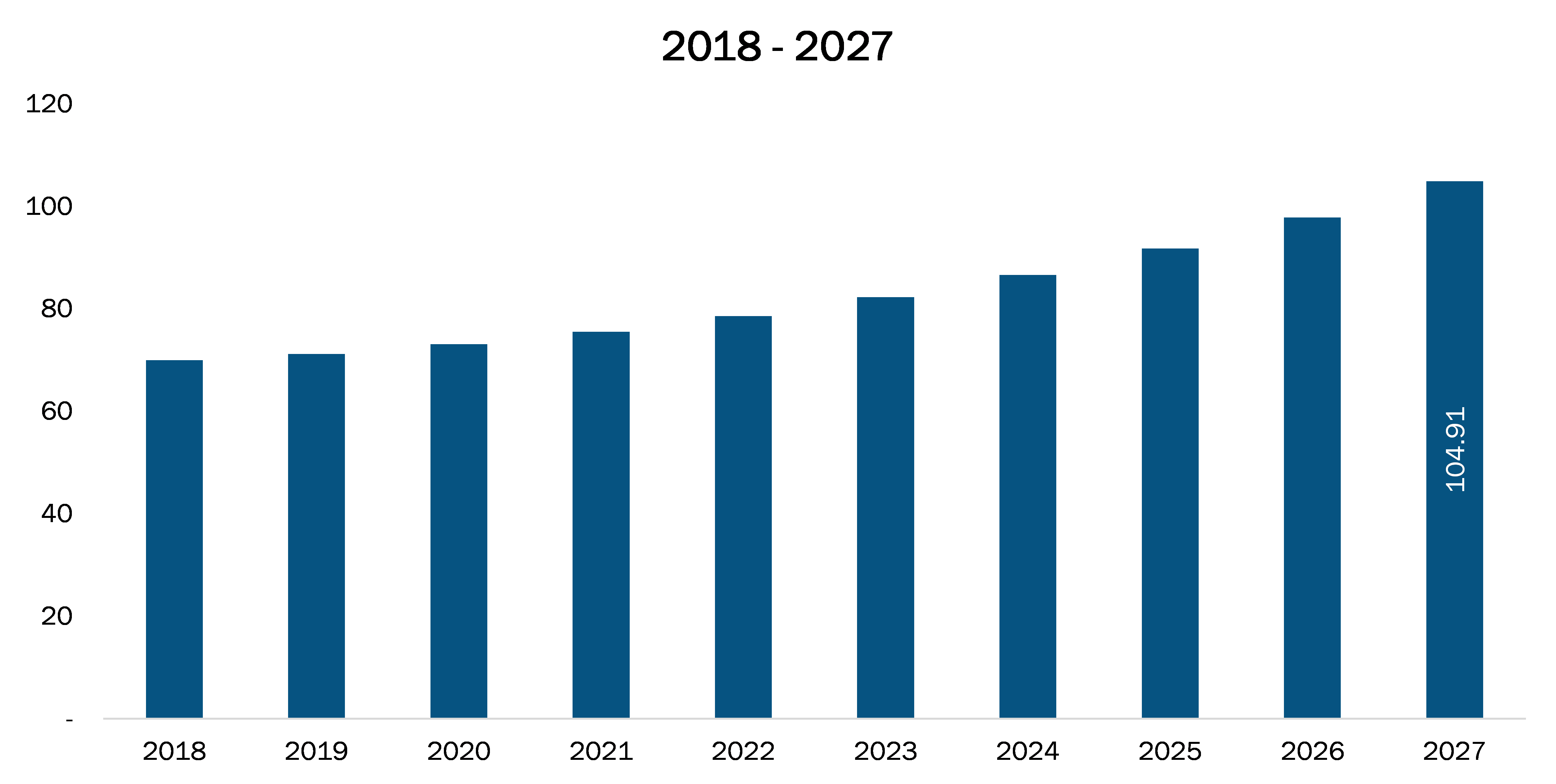The Asia Pacific optical microscopes market is expected to reach US$ 1,398.82 Mn in 2027 from US$ 873.44 Mn in 2018. The market is estimated to grow with a CAGR of 5.7% from 2019-2027.
The growth of the market is driven by the factors such as, to increasing biotechnology sector in Asia pacific market and rising innovative product development However, the market is likely to get impacted due low resolution, magnification and surface view limit the use of optical microscopes in the region.
To gain a high number of market share companies are investing in the development of a new microscope. These microscopes are produced by keeping in consideration of the requirement from the end user. This technologically advanced product gives the company an edge over the competitor. The market is highly competitive, which requires continuous improvement in technology. Companies in the optical microscopes market are gradually focusing on software-based variation to remain competitive. Since the demand from the life sciences industry for research is rising, Olympus one of the players in an optical microscope has launched the IXplore microscope range for modern laboratory life sciences and medical application requirements. This product comes with an automated imaging technology feature for accurate and efficient experiments and the IXplore Live feature for precise live cell imaging. Furthermore, in November 2016, Nikon Instruments Inc., headquartered in Japan has developed New Eclipse Ti2 Inverted Research Microscope which doubles the field view and enhances the stability and usability. Nikon is continuously is expanding imaging capabilities for the researchers to address critical research.
Companies like Meiji Techno Co., Ltd., HIBUYA OPTICAL CO., LTD, LABMATE ASIA and others are developing products with integrated automated platforms to increase their application in life science. Meiji Techno Co., Ltd. is among the leading three market manufacturers of optical microscopes in Japan.
China is expected to lead the market in the Asia Pacific region owing to developments witnessed in the biotechnology sector along with the advancements made in optical microscopes. However, the introduction of technological advancements, along with the dynamic changes in the biotech sector, is likely to contribute the largest share in the Asia Pacific region during the forecast period.
Rest of Asia Pacific Optical Microscopes Market Revenue and Forecasts to 2027 (US$ Mn)

- This FREE sample will include data analysis, ranging from market trends to estimates and forecasts.
ASIA PACIFIC DIABETES CARE DEVICES – MARKET SEGMENTATION
By Product
- Inverted Microscope
- Stereo Microscope
- Digital Microscope
- Accessories
By End User
- Academics & Research Institute
- Diagnostic Laboratories
- Hospitals & Clinics
- Pharmaceuticals & Biotechnology Companies
By Geography
- Asia Pacific
- China
- Japan
- India
- Suth Krea
- Australia
Company Profiles
- Olympus Corporation
- Leica Microsystems
- Nikon Corporations
- Carl Zeiss AG
- Agilent Technologies, Inc.
- Bruker
- Meiji Techno.
- JEOL Ltd.
- ACCU-SCOPE Inc.
- Ken-A-Vision, Inc.
Asia Pacific Optical Microscopes Report Scope
| Report Attribute | Details |
|---|---|
| Market size in 2018 | US$ 873.44 Million |
| Market Size by 2027 | US$ 1,398.82 Million |
| CAGR (2019 - 2027) | 5.7% |
| Historical Data | 2016-2017 |
| Forecast period | 2019-2027 |
| Segments Covered |
By Product
|
| Regions and Countries Covered |
Asia-Pacific
|
| Market leaders and key company profiles |
|
- Historical Analysis (2 Years), Base Year, Forecast (7 Years) with CAGR
- PEST and SWOT Analysis
- Market Size Value / Volume - Regional, Country
- Industry and Competitive Landscape
- Excel Dataset
Recent Reports
Testimonials
Reason to Buy
- Informed Decision-Making
- Understanding Market Dynamics
- Competitive Analysis
- Identifying Emerging Markets
- Customer Insights
- Market Forecasts
- Risk Mitigation
- Boosting Operational Efficiency
- Strategic Planning
- Investment Justification
- Tracking Industry Innovations
- Aligning with Regulatory Trends






















 Get Free Sample For
Get Free Sample For